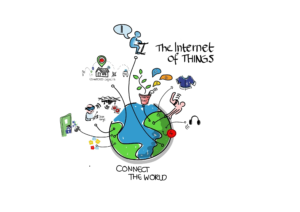How to Use Project Management Tools to Boost Team Efficiency
Project management tools are essential for modern teams aiming to achieve peak efficiency. Imagine a scenario where project timelines are accurately predicted, tasks are seamlessly assigned and tracked, and communication flows smoothly between team members. Project management tools offer precisely this kind of streamlined operation—a system for managing tasks, projects, and teams. But many teams struggle to leverage these tools effectively. This article will delve into how to use project management tools to truly boost team efficiency. We’ll cover everything from choosing the right software to implementing effective strategies for streamlining workflows and fostering collaborative work environments. This guide will be structured in five key sections: choosing the right tool, implementing project management best practices, optimizing team communication, effectively managing tasks, and fostering a collaborative work environment.
Choosing the Right Project Management Tool
Identifying Your Needs
Effective project management starts with choosing the right tool. A one-size-fits-all approach rarely works. Consider the unique needs of your team. Are you managing complex projects with intricate dependencies? Or, are you working on simpler projects with a small team? Different tools cater to different needs. If you primarily need a simple task management system, a tool like Trello might suffice. On the other hand, for large-scale projects involving intricate dependencies and numerous stakeholders, sophisticated tools like Asana or Monday.com are preferable. The type of project you handle will drastically influence your tool selection. Factors to consider include project size, team size, complexity, budget, and integrations with existing software.
Evaluating Different Options
Research and compare different project management tools. Read reviews, evaluate features, and consider your team’s skill level. Free trials or demos often provide valuable insights. Consider if the tool integrates with other software you already use, such as calendars, email, or customer relationship management (CRM) systems. Integration is key to seamless workflows, especially for teams working across departments or with clients. Look at user interfaces and how intuitive the software is to navigate. A tool with a confusing interface will lead to frustration and decreased adoption.
Implementing the Chosen Tool
After selecting the tool, properly training your team is paramount. Organize workshops or create a comprehensive training guide to ensure everyone understands the tool’s features and functionalities. This training session can demonstrate optimal usage and practical application. Establish clear guidelines and expectations for how the tool should be used. For example, specify which team members are responsible for certain tasks and how often updates should be made.
Optimizing Workflow and Processes
Tailor your project management tool to your existing workflows. Don’t try to fit your workflow to the tool. This is crucial for adapting to the new tools and processes quickly. Analyze your current process, identify areas for improvement, and design strategies for streamlining tasks. Consider using the tool’s templates and features to automate repetitive tasks. The more efficient your workflows, the greater your team’s overall productivity. Don’t overcomplicate it; focus on essential features.
Related Post : Cloud Computing in 2024 Latest Advancements and Applications
Gathering Feedback
Establish a feedback loop. Actively solicit feedback from your team members about the use of the new project management tool. This will help understand how to adapt to the tool better and address any potential pain points. Regular feedback sessions will ensure that you can continuously optimize the project management tools’ usage within your team. This is crucial for team satisfaction and increased efficiency.
Implementing Project Management Best Practices
Defining Clear Project Goals
Start by clearly defining project goals. This establishes a common understanding for the team and serves as a guide for the entire project lifecycle. Use a project roadmap to outline tasks and milestones. This roadmap should be accessible to everyone on the team and should be updated regularly as the project evolves. Specific, measurable, achievable, relevant, and time-bound (SMART) goals are essential for effective project management.
Setting Realistic Deadlines
Unrealistic deadlines can lead to stress and reduced team performance. Realistic deadlines help avoid bottlenecks and ensure projects are completed efficiently. Collaborate with the team to establish achievable timelines and milestones. This will prevent burnout and help maintain momentum, especially on complex projects.
Establishing Clear Roles and Responsibilities
Define each team member’s responsibilities and roles within the project. Clearly assigning tasks and responsibilities prevents confusion and ensures accountability. Avoid task ambiguity, and empower team members to take ownership of their assigned tasks.
Maintaining Effective Communication
Consistent communication is vital for project success. Establish regular team meetings, use instant messaging platforms, and create a central communication hub within the project management tool. Encourage open communication channels to address concerns and provide updates on project progress. This will foster a collaborative environment and improve transparency across the project’s lifecycle. Transparency is key for a well-performing team.
Regularly Monitoring Progress
Regular progress monitoring is crucial to identify and address any roadblocks or deviations from the project plan. Use project management tools to track progress and identify areas needing attention. Regular reports on project status, as well as milestones, are essential to highlight issues.
Optimizing Team Communication
Utilizing Communication Tools
Effective communication is a cornerstone of successful project management. Integrate communication tools like instant messaging platforms, video conferencing software, and email into your project management workflow. Project management tools often include built-in communication features, fostering real-time conversations and quick responses. Using a single platform for communication simplifies workflow and reduces the risk of missed messages.
Implementing a Communication Plan
Develop a communication strategy tailored to your team. Outline communication protocols, frequency of updates, and designated contact persons. This communication plan acts as a guide for smooth workflow, preventing miscommunication and facilitating efficient knowledge transfer.
Establishing Clear Communication Channels
Establish clear guidelines for communication within your project management tool. Define the purpose of each channel and who is responsible for each conversation. This will ensure seamless communication within the project management workflow.
Fostering Team Collaboration
Encourage collaboration by creating opportunities for team members to share ideas and work together. Utilize project management tools to facilitate collaborative task completion and knowledge sharing. This promotes collective problem-solving and a culture of mutual support.
Providing Regular Updates
Provide regular progress updates to keep the entire team informed. This ensures that everyone is on the same page regarding the project’s status and any potential obstacles. Transparency is key for building trust and efficiency.
Effectively Managing Tasks
Breaking Down Large Tasks
Break down large tasks into smaller, manageable subtasks. This increases clarity, improves accountability, and makes tracking progress easier. This process simplifies the project scope and makes it easier to handle larger projects. Assign tasks to appropriate team members based on their skill sets.
Setting Priorities and Deadlines
Prioritize tasks based on their importance and urgency. Use the project management tool’s features to set deadlines and track progress. This will help avoid confusion and ensure tasks are completed efficiently.
Utilizing Task Management Features
Most project management tools offer task management features to categorize, track, and assign subtasks. Utilize these tools to assign due dates, monitor progress, and manage dependencies between different tasks. This improves accountability and efficiency in task management.
Utilizing Templates and Checklists
Leverage the tool’s templates to create standardized processes for different project types. Create detailed checklists to ensure all necessary steps are completed. This reduces errors and keeps projects on track, especially for larger projects with more members.
Regularly Reviewing and Adapting
Periodically review tasks to ensure they are still relevant and aligned with project goals. This will help maintain focus and efficiency, especially in dynamic projects. Adapt strategies if necessary to accommodate changing project needs.
Fostering a Collaborative Work Environment
Promoting Open Communication
Encourage open communication and idea-sharing among team members. Foster a culture where team members feel comfortable asking questions and contributing ideas. This creates a dynamic and productive work environment.
Encouraging Team Collaboration
Implement team-building activities to strengthen relationships and encourage collaboration. Teamwork is crucial in achieving success in collaborative projects. Use project management tools to facilitate collaboration on specific tasks and projects.
Utilizing the Tool for Feedback
Use the project management tool for feedback mechanisms. Encourage team members to provide feedback on each other’s work and contribute to a constructive environment. This positive feedback loop will increase engagement and support collaboration.
Addressing Conflicts Proactively
Address conflicts proactively to prevent them from escalating. Create a system for resolving disputes through project management tool integrations. Utilize the platform to address issues and implement solutions.
Maintaining a Positive Atmosphere
Foster a positive and supportive work environment to keep team morale high. Regular team meetings and acknowledging achievements can make a significant impact in improving morale. Acknowledge and celebrate achievements to keep motivation high.
In conclusion, strategically leveraging project management tools can significantly boost team efficiency by streamlining workflows, improving communication, and fostering collaboration. Choosing the right tool and adapting to its features are key to unlocking its full potential. By implementing these strategies, teams can achieve higher productivity, better project outcomes, and ultimately, a more engaged and successful work environment. Consider a free trial or demo of a project management tool to discover which best fits your team’s needs and boost your team’s efficiency today!
Share this content:














Post Comment